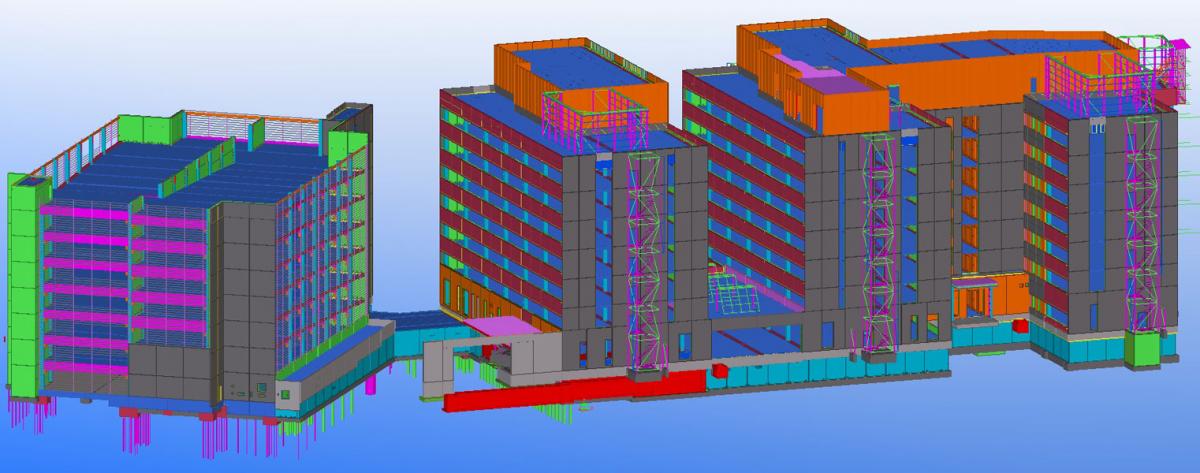
 BIM standards, much like traditional CAD standards, are used when creating and sharing BIM models. Using real-life examples, this blog explains why BIM standards matter, how they impact project productivity, and what these standards looks like. I’ll also point to resources that can help your agency build its own BIM standards.
BIM standards, much like traditional CAD standards, are used when creating and sharing BIM models. Using real-life examples, this blog explains why BIM standards matter, how they impact project productivity, and what these standards looks like. I’ll also point to resources that can help your agency build its own BIM standards.
Why your Agency Needs BIM Standards
These standards ensure continuity for the project and provide the project owner with the format they desire; they can also have a big impact on productivity and ensure the overall BIM implementation is sustainable. Consistent BIM standards are particularly critical to government agencies and departments who manage multiple projects across multiple stakeholders, contractors, and end users However, as with CAD standards, some project coordinators or owners aren’t diligent about establishing and enforcing those standards or end up referring to their own standards, creating complications downstream.
For any investment in BIM to be sustainable, the consistent development and use of BIM across multiple building types and across a wide range of government projects and agencies is essential. Without a national uniform standard, more and more agencies are establishing BIM standards or guidelines of their own.
For example, the New York Department of Design and Construction (NY DDC), a winner at the 2011 Acronym CAD Awards and a leader in the public sector adoption of BIM for infrastructure and building projects has developed its own comprehensive BIM Guidelines to address the challenges of sharing more information across multiple agencies on multiple platforms and with its millions of citizens.
BIM Standards and Guidelines – At Work for NY DDC
Prior to standardizing on BIM, NY DDC was faced with a variety of limiting issues including a bidding process that failed to deliver the necessary expertise needed for specialized projects; cumbersome project management processes; quality control issues; a lack a lack of uniform design standards for BIM projects, and more.
By implementing BIM and consistent standards for its use across the agency and by the contractors who support the agency, NY DDC has put in place BIM methodologies and processes that make it easier for teams to assess and visualize higher quality building designs, and collaborate more effectively than would otherwise be possible with traditional and cumbersome paper-based blueprints.
Based on its own experiences adopting and implementing BIM, NY DDC’s BIM Guidelines contain precisely developed specifications for use by architects and engineers and construction managers to assist them in preparation of contract documentation and standardized building information models, including:
The BIM software acceptable for DDC projects
- Choice of project delivery model
- Client agency design standards
- The types of models and any analysis files expected at each submission
- The naming conventions and standards required to be used when developing a project using BIM technology
- Roles and responsibilities of team members
- A BIM execution plan (required within 30 days of project award).
NY DDC’s BIM Guidelines considers the end-use of the model for multiple client agencies, allowing qualified and authorized client agency representatives to review the ways in which the BIM may facilitate their ongoing building operation and maintenance protocols, and tailor their agency requirements and standards to leverage the enhanced capabilities provided by BIM for building operations and management.
The BIM guide also enables the consistent use of BIM throughout the project workflow making it easy for teams to assess and visualize higher quality building designs, and collaborate more effectively than would otherwise be possible with traditional and cumbersome paper-based blueprints.
Through the use of BIM tools such as Revit and clear BIM guidelines, the DDC and its partners have accomplished a more coordinated set of documents with each required submission.
Speaking with Acronym, NY DDC’s, BIM Manager, Safiy Abdur- Rahman highlighted the benefits of BIM beyond the planning and design phase, made possible thanks to consistent guidelines:
“The benefits were even greater when transitioning into the construction phase with the transfer of BIM models from the design team to the construction manager for assistance in the virtual design and construction process. The construction manager’s use of BIM for scheduling, logistics, and coordination already have proven paramount,” said Abdur-Rahman.
NY DDC’s BIM guidelines are now a go-to resource for any-one doing work with the City of New York. Because they are agency- and design platform-agnostic they form a useful resource for anyone looking to implement BIM in the city. As BIM toolsets and uses continue to evolve, the DDC BIM Guidelines will continue to be reviewed and updated to reflect advances in industry technology, methodology and trends, as deemed appropriate for municipal agency work in New York City.
To learn more about NY DDC’s BIM implementation and how it has helped the agency achieve its mission of championing design and construction excellence in this informative case study.
BIM for Govies – A Free e-Book
 This article was originally featured in this free e-book BIM for Govies™. If you’re considering a move to BIM, download it today and read more about:
This article was originally featured in this free e-book BIM for Govies™. If you’re considering a move to BIM, download it today and read more about:
- The basics of BIM
- Witness real-life examples of how the public sector is using BIM for building and infrastructure projects
- Discover more about BIM technologies and standards
- Get tips for assembling the right BIM team
- Learn the do’s and don’ts for a realistic BIM implementation
Related Blogs
Featured image courtesy of HPAC.com

















































